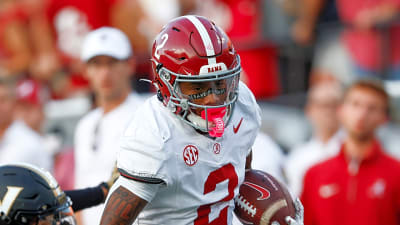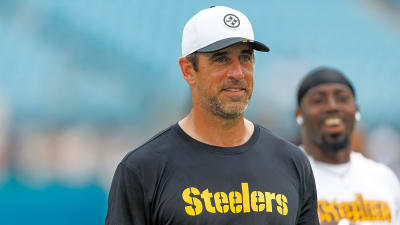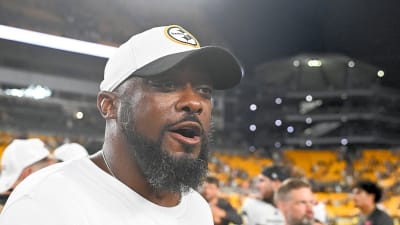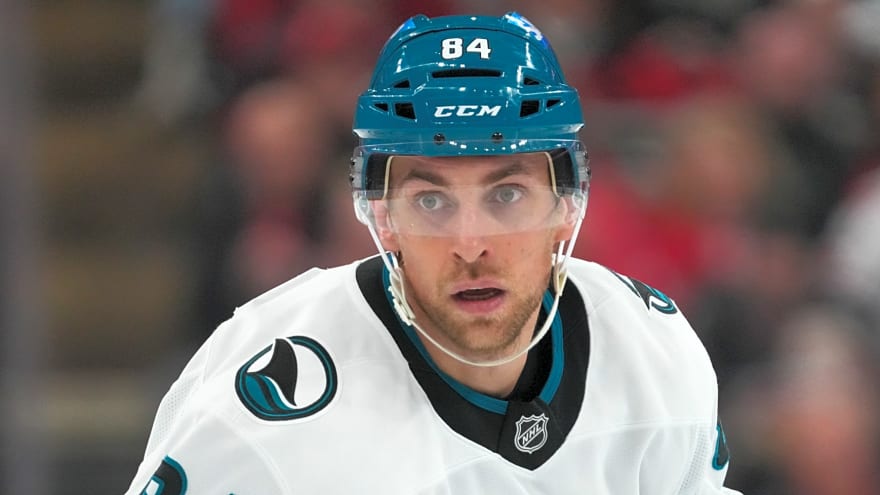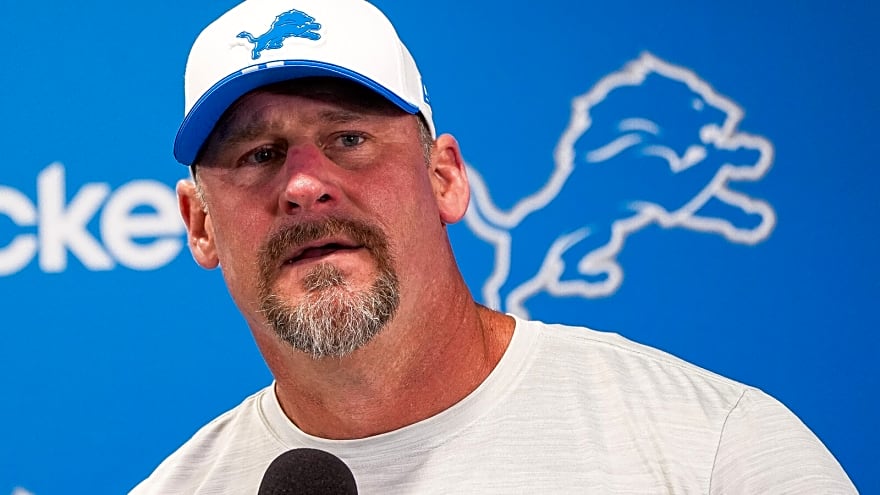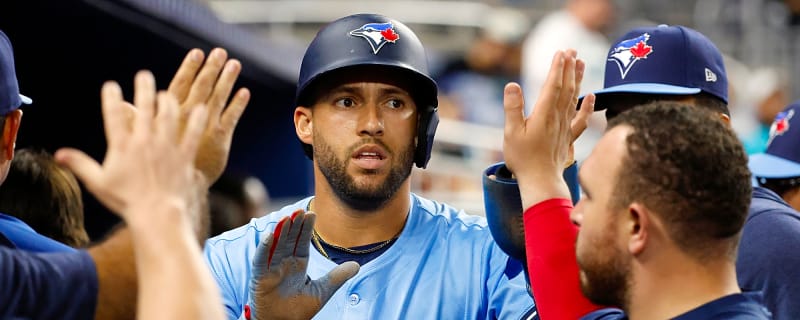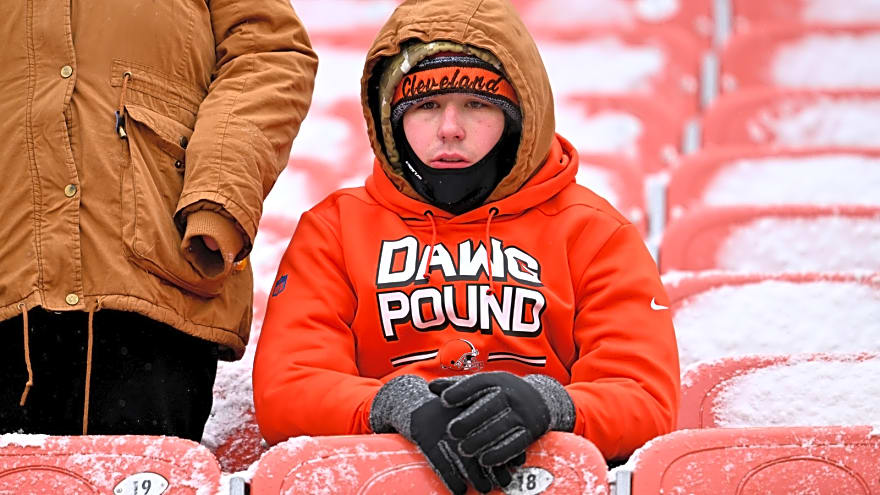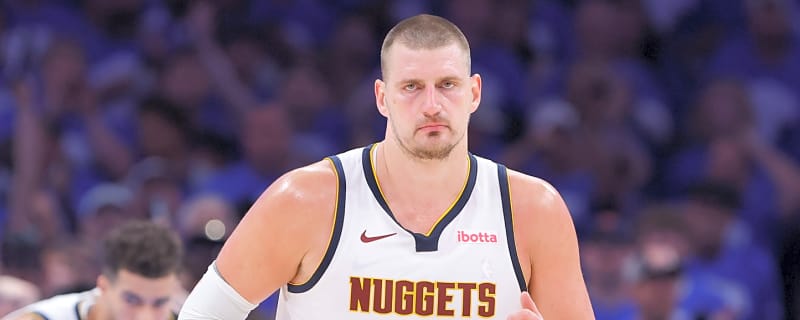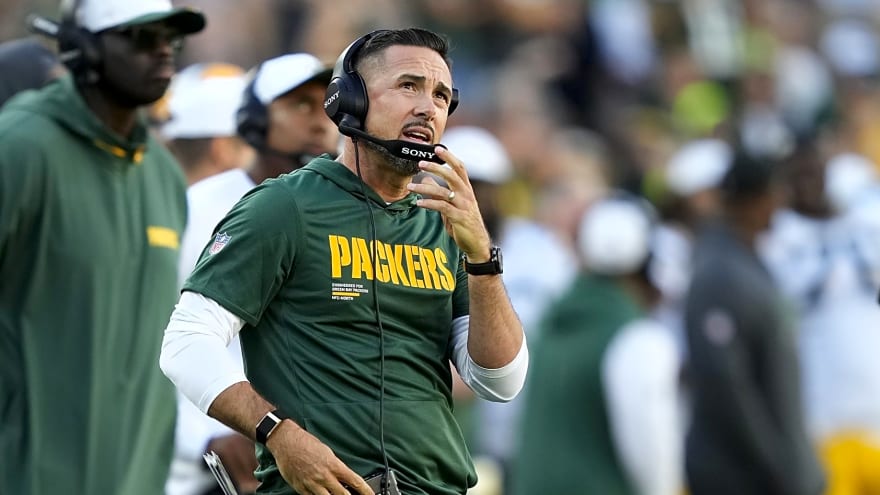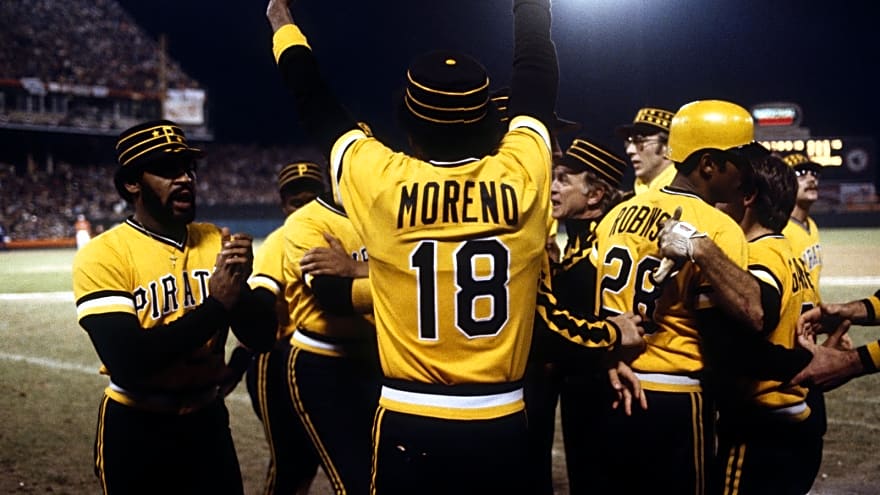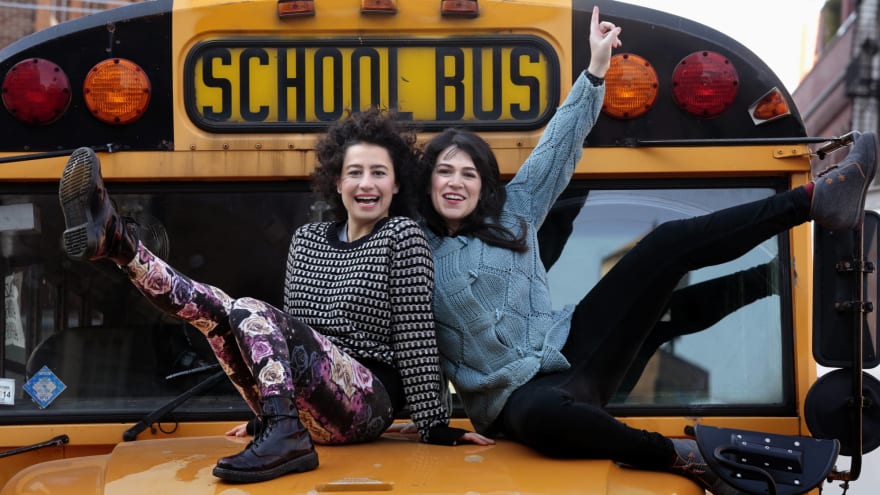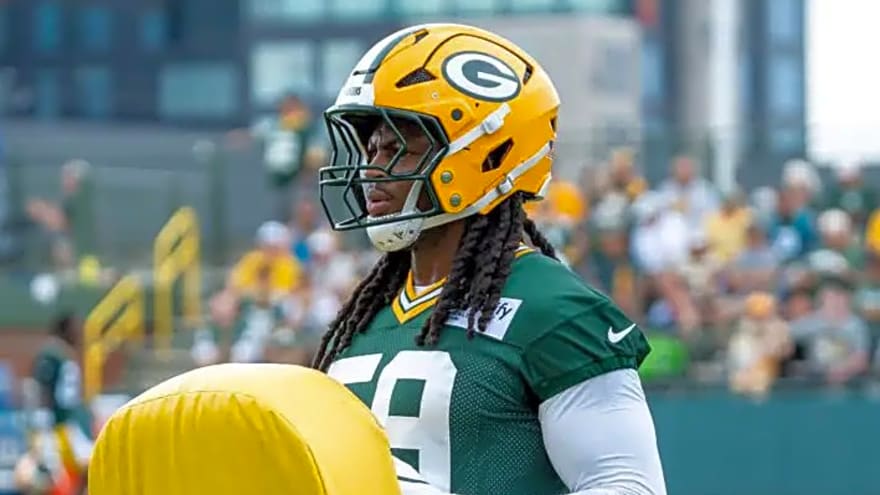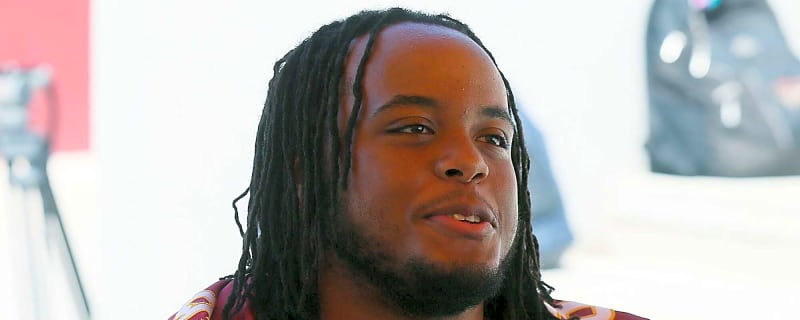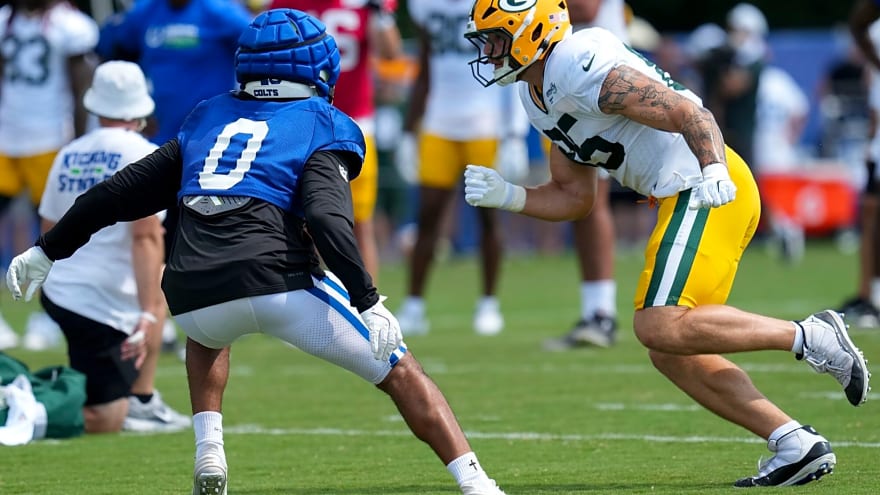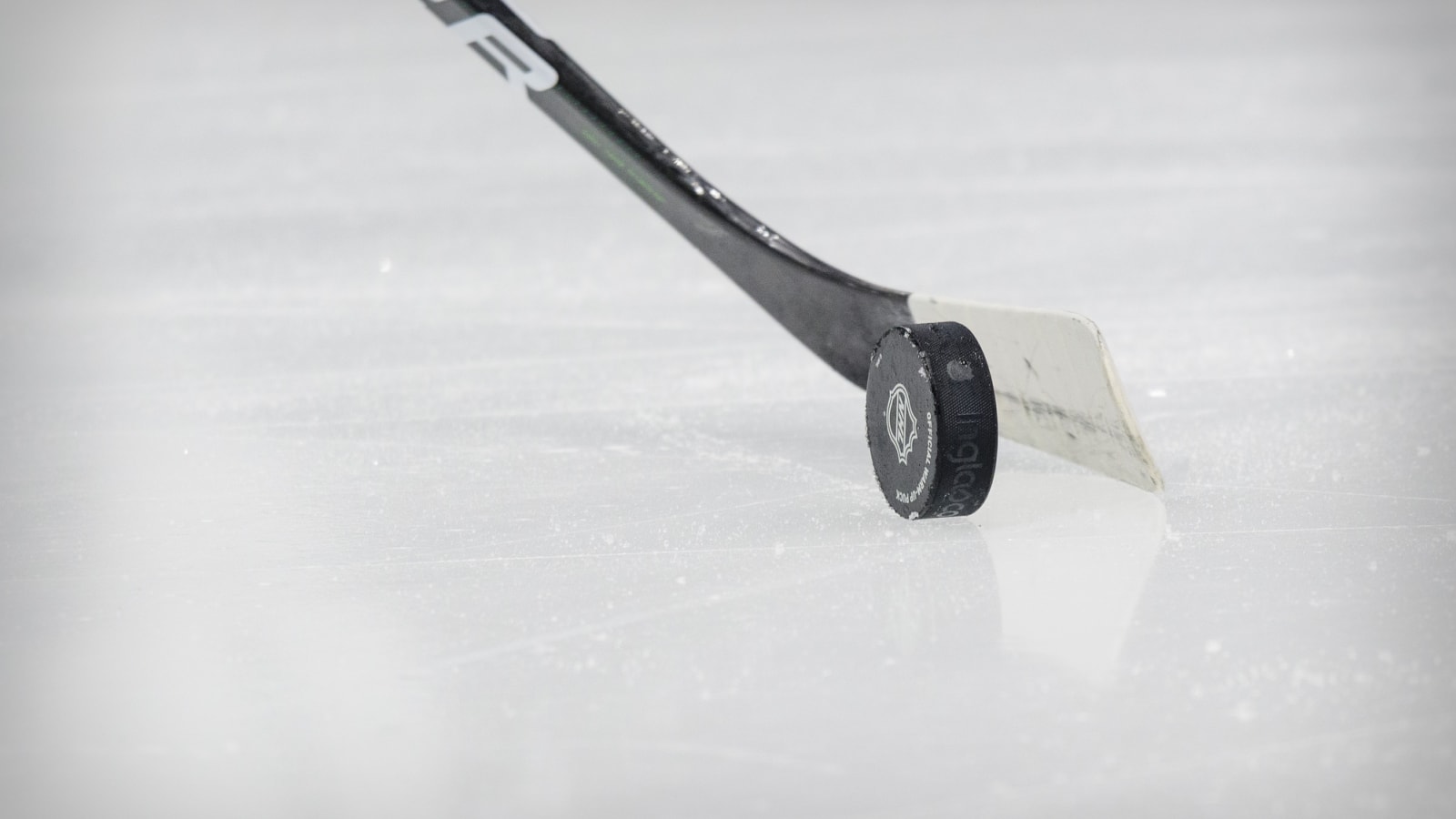
Is this a good year to snag a future No. 1 goaltender in the NHL? Not exactly.
But if you’ve got the draft capital to throw at least a pick on one of them? It’s a no-brainer, really. Goaltending is such a fickle position, and even if you think you’ve got enough depth, you really don’t. That’s what makes drafting goalies interesting. With the unpredictability we see at the top, having a few at your disposal to bank on makes the most sense.
Take Detroit, for example. They already had Sebastian Cossa in the system, but they took Trey Augustine last year to help supplement it. Now, they’ve got two top 10 goalie prospects, and if both hit, that’s a score. If one makes it and the other doesn’t, that’s fine. You’ve also got a nice trade chip, regardless. And then there’s Montreal, who took three last year. Jacob Fowler is their prize d piece, but they have options in the post-Carey Price world.
So, drafting at least one goalie seems like a safe call for most teams. And if they do, here’s 15 of the best available to them:
1. Marcus Gidlöf, Leksands (Sweden U-20)
Gidlöf is so fascinating. At 6-foot-6 with solid numbers in the Swedish U-20 league, Gidlöf is aggressive in his crease and takes up so much space. He tracks pucks well, is extremely competitive and has good rebound control. Some scouts think he should be the first goalie taken, with some thinking as high as the second round. Others just see him as a big man and that’s it, and that he’s not even a top-10 option. I think there’s a lot of projecting for those who’ll think he’ll go high, but I still see a goalie who has the raw fundame ntals to be a legit No. 1 in the NHL with proper development.
2. Carter George, Owen Sound (OHL)
George’s game is built around just keeping things steady and relaxed in the crease. His mental strength is evident, too, showing often that he can handle the pressure of a big game and a heavy workload. At 6-foot-1, George is also on the smaller side, but he’s as confident as they come in this year’s class. Let in a bad goal? He’s going to rob you on your next chance. Nothing seems to bother him, and he also sees through traffic well for a smaller keeper. I thought George was great at the U-18s, especially in the medal round, even if the stats might not fully reflect it. From a skill perspective, he’s clean, but can scouts look past the smaller frame? I think he’ll be fine.
3. Eemil Vinni, JoKP (Mestis)
Vinni’s stats might not be special, but it’s difficult being a starter in a pro league at 18. Vinni didn’t get a start at the World Juniors, but he’s arguably been Finland’s best goaltender in the U-20 national team competition this year. At 6-foot-2, he has decent size and, fortunately, he isn’t overcommitting on shots as much as he was a year ago. Vinni will need a lot of seasoning before becoming an NHLer, but I see potential there in how he commands himself in the crease. I think he’s one of those guys we’re going to see have a breakout season in Liiga before heading to the AHL and becoming an NHL backup.
4. Mikhail Yegorov, Omaha, USHL
Yegorov was one of the busiest goaltenders in the draft class this year, which may or may not be a good thing, depending on who you talk to. The Belarus native has the mental game going for him, he can handle the heavy workload, but he also has the size. At 6-foot-5, that’s the frame NHL teams crave. Scouts want him to be quicker, but they also wonder if he deals with fatigue more than the average goalie based on his workload. From a raw skills perspective, though, he’s a good skater, has an excellent glove hand, covers a lot of the net and tracks pucks well, especially through traffic. Yegorov is positionally sound, and he’s one of the best at keeping pucks out of the net down low thanks to his great legspan.
5. Ryerson Leenders, Brampton (OHL)
Leenders was one of the best goaltenders in the CHL, especially in the first half when he looked nearly unstoppable as the Steelheads’ No. 1. His play fell a bit in the second half and he was George’s backup at the U-18 World Championship. But in terms of raw skills, Leenders has everything you’re looking for. He’s quick, athletic, tracks pucks well and can react quickly when the puck gets tipped or goes w here he doesn’t expect. He’s not big, but I see NHL potential.
6. Ilya Nabokov, Magnitogorsk (KHL)
Many are tabbing Nabokov as one of top goaltenders in the draft, and his recent season in the KHL helps back up the concept. The 6-foot-1 goaltender isn’t big, and that’s a large reason why he was passed over three times already. But, as the oldest prospect in this draft class, he brings serious potential, and he’s closer to NHL duty than most others on this list. He was one of the KHL’s top goaltenders despite being one of the youngest starters and showed unbelievable athleticism and post-to-post movement. Scouts love his ability to move fluently in the crease, and his raw talent is going to excite quite a bit of people.
7. Pavel Moysevich, SKA. St Petersburg (KHL)
Mosyevich rose up the rankings in the second half, and for good reason. The Belarusian was passed over in 2023, but the fourth-ranked European goaltender showed promise playing in the KHL and MHL. At 6-foot-5, he has the size teams crave and tremendous athleticism to boot, too. Moysevich does a great job of holding the fort down low and has an active shoulder that allows him to take space away up high. He looks ahead of his age group in terms of maturity and positioning. I can see a team banking on his size and athleticism, so much so that I f ully expect he’ll be an NHLer in the next three to four years.
8. Kim Saarinen, HFK (Finland U-20)
Saarinen stands tall at 6-foot-4 and lets his body do the talking. He covers so much of the net, and he’s athletic enough to stretch out to make more difficult stops when needed easily. He had some rough goes internationally this year, but he looked great back home, reminding me just how good he can be in the zone. He allows poor goals a little too much for my liking but the size alone makes him intriguing – and, for the most part, he was good against U-20 competition. Saarinen has the size and athleticism to earn himself a high spot on draft day, but I’m not sure he’s got the play reads right now to be a serious long-term option for a team.
9. Dawson Cowan, Spokane (WHL)
Cowan is no stranger to making some big, highlight-reel stops, showing a keen sense of athleticism. He has quick legs that make him hard to beat and his active glove hand comes up big often. Cowan can be caught reacting too slowly to a shot, and his rebound control isn’t great. But other times, he’ll just turn on a switch and it becomes difficult to get a shot past him. Cowan missed out on 2023 NHL Draft eligibility by just over a week, but he put the extra time to good use with a solid season as Spokane’s starter. He’s only 6-foot-1, but I like how important he was to Spokane and how he never crumb led under the pressure of playing against quality competition.
10. Nick Kempf, USNTDP
Kempf is fresh off an excellent showing at the U-18 World Championship, where he was one of the top goaltenders en route to a silver medal with the United States. He’s the fourth-ranked goaltender by NHL Central Scouting. His numbers don’t look great, but the USNTDP juggles play in a variety of different competitions, including against NCAA teams. So you have to take that with a grain of salt, but he definitely has stood out whenever he has played in internationally. He’s very athletic and is never caught watching the puck from the crease. Kempf never quits on a chance, and his quick reads allow him to make some huge stops. I think he’s better than the raw stats suggest.
11. Kirill Zarubin, AKM Tula (MHL)
Zarubin’s had an outstanding run with Tula in the MHL, quickly establishing himself as one of the more promising young Russian goalies in this draft. He’s 6-foot-4 with great lateral quickness and reads plays so well through traffic. It can be difficult to evaluate Russian junior league goaltenders because quality can be seriously lacking, but his big frame, cool demeanor, and puck-tracking prowe ss make him a solid option for a team looking to throw a dart.
12. Petteri Rimpinen, Kiekko-Espoo (Mestis)
At one point, Rimpinen looked like one of the best goalies at the U-18 World Championship. But a poor goal in the quarterfinal against Sweden effectively eliminated the team early on home ice, and you could see it bothered him. It’s too bad, because there’s so much to like here. He’s athletic, tracks pucks well and doesn’t seem to be out of position too often. Rimpinen isn’t a big guy, but he makes up for it by moving as quickly as he does. I think his big year in Mestis should help his cause to get drafted.
13. Evan Gardner, Saskatoon (WHL)
Gardner played AAA U-18 hockey with the RINK Hockey Academy in Kelowna a year ago. This year, he finished with a WHL-leading .927 save percentage in 30 games with the Blades as a rookie. He shared the net with veteran Austin Elliott but Gardner was the better of the two goalies, going 21-5-0. He has decent size at 6-foot-2 while maintaining a calm presence in the crease. His rebound control has always been an issue but he moves well enough to at least help compensate for it. Gardner is one of the more positionally sound goaltenders I’ve seen in this class and tracks pucks well, too. The biggest question – was Gardner’s success fueled b y having a great team in front of him, or is he the real deal?
14. Lukas Matecha, Tri-City (WHL)
Matecha looked excellent at the CHL Top Prospects Game earlier this year, making some great saves while playing a half-game. He’s in his first year in North America, and his numbers have been good despite often getting shelled with Tri-City. He’s no stranger to 40-shot contests and often plays some of his best hockey when busy. At 6-foot-3, Matcha has the size teams crave, and I can’t imagine he’ll go undrafted like last year. There’s enough raw talent, mixed in with a good frame, to make him intriguing.
15. Martin Haronik, HC Modre Kridla Slovan (Slovakia U-20)
It’s weird. When I saw him at the U-18s, I felt like he played better against good teams like Finland than he did against lesser teams such as Latvia. Haronik played some good games heading into the tournament, including the shutout in half a game against Switzerland in pre-tournament action and his play in the second Slovak league in the final month of the season. Most scouts are banking on his 6-foot-5 frame, but he still needs to figure out how to contain his movements in the crease to maximize his size. I think he’s got an excellent glove hand and great vision, so there’s a ton of raw elements there that you like to see. Will it be enough? I need a bit more consistency to be sure.
More must-reads:
- Two-time Stanley Cup champion leaves NHL for Switzerland
- Panthers will be without Matthew Tkachuk for a while
- The '2024-25 NFL rushing touchdown leaders' quiz
Breaking News
Trending News
Customize Your Newsletter
 +
+
Get the latest news and rumors, customized to your favorite sports and teams. Emailed daily. Always free!
TODAY'S BEST

Rangers Must Trust Young Forwards in 2025-26
The New York Rangers are coming off a disappointing 2024-25 season, and newly hired head coach Mike Sullivan has some tough decisions to make about line combinations and who will make the opening night lineup. They have a mix of veterans as well as some key young forwards who did not get much playing time last season. This season, they need to show more faith in their young forwards and give them consistent playing time. Rangers’ Young Forwards Were Frequently Benched for Veterans in 2024-25 Last season, the Rangers called up a few of their top prospects, as Brett Berard and Gabriel Perreault made their NHL debuts and Brennan Othmann played in 22 games after playing three games in 2023-24. However, none of the three got many opportunities, as then-head coach Peter Laviolette usually opted to play veterans over them. He also decided to bench Kaapo Kakko, who was then traded to the Seattle Kraken, even though he was playing well in a bottom-six role. Berard is a quick skater and, despite playing in a bottom-six role, he was noticeable on the forecheck, drove to the net, and made the most of his opportunities. He had six goals and four assists in 35 games, while averaging 10:43 in ice time per game. Like Berard, Othmann played in a bottom-six role, and though he was effective on the forecheck, he did not capitalize on his scoring opportunities. He finished with no goals and two assists in 22 games, while averaging 9:58 in ice time per game. He did play well defensively and was a plus-7. The Rangers also made a curious decision as general manager Chris Drury signed Perreault, the team’s top prospect, to a three-year, entry-level contract. At the time, just eight games remained in the season, and the expectation was that he would get lots of ice time with New York outside a playoff position. He started in a top-six role, but quickly moved down to the bottom-six and was then benched by Laviolette. He averaged 14:26 in ice time per game in five games and was held without a point. A big bright spot for the Rangers last season was the play of 23-year-old Will Cuylle, who worked his way into the top six with his combination of grit, physicality, and skill. He led the team in hits with 301 and finished with 20 goals, 25 assists, and was plus-12 while averaging 15:05 in ice time per game. Rangers Need to Give Their Young Forwards More Opportunities For years, the Rangers have struggled to develop their top forward prospects. They have often benched them for defensive mistakes or played them in a bottom-six role. While that strategy made sense when they were a Cup contender and had lots of veterans playing at a high level, they missed the postseason in 2024-25, and many of their veteran forwards struggled. Though Berard, Othmann, and Perreault may make some mistakes, they need to either get consistent ice time in the NHL or develop in the American Hockey League (AHL). All three of them are skilled players, with enough upside that they deserve an opportunity to prove themselves. The Rangers want their forwards to play well defensively and play with physicality. While Cuylle is a perfect fit, they also need to develop highly skilled prospects who do not play with as much physicality. Perreault had 19 goals and 41 assists as a freshman at Boston College in 2023-24, and he had 16 goals and 32 assists in 37 games with them last season. He has the skill to become a top-six forward for years to come, but that will not happen if they bench him every time he makes a mistake. The Rangers Need to Learn From Past Mistakes Laviolette sent the wrong message last season when he benched players like Kakko and Berard, while continuing to play veterans who made much more egregious defensive mistakes over and over. Sullivan needs to show faith in the Rangers’ top prospects and give them a true opportunity to prove themselves. There is nothing wrong with allowing prospects to develop in the AHL, but if the Rangers’ top prospects earn a spot in the lineup, they should not be buried on the fourth line and benched after every turnover. They need to learn from their past mistakes in developing their top forward prospects and handle them differently this season.
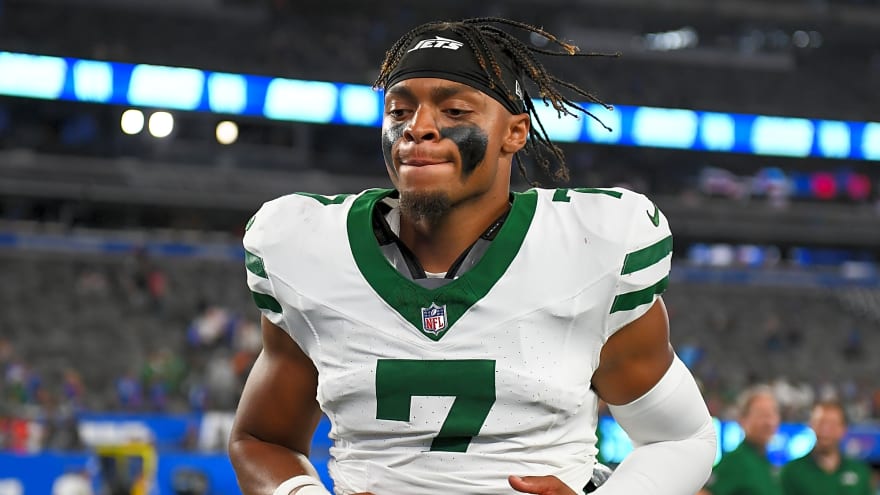
Jets coaches try to calm situation in wake of Justin Fields' comments
According to Josh Alper of Pro Football Talk, New York Jets starting quarterback Justin Fields did not throw a pass that traveled 10 yards in the air during his two preseason appearances. Some have voiced concerns about the Jets' passing attack with Fields in the lineup, but he insisted while speaking with reporters on Tuesday that he's "fine with taking eight-yard completions every play." On Wednesday, Jets offensive coordinator Tanner Engstrand addressed Fields' comment. "He's going to play the play the way the defense allows him to play it," Engstrand said about Fields, per Zack Rosenblatt of The Athletic. "So if they're going to allow him to take a shot down the field, he's going to take it. If they don't allow him, he's going to check the ball down, and we'll move on to the next play. We're all good with that." Fields completed just one of five passes for four yards in the Jets' 31-12 loss to the New York Giants on Saturday. According to Fox Sports, he connected on four of nine pass attempts for 46 yards across his first two preseason appearances of the summer. Despite such lackluster numbers, first-year Jets head coach Aaron Glenn suggested on Tuesday that he is ignoring "the noise that happens on the outside" regarding the team's passing offense. On Wednesday, Jets passing game coordinator Scott Turner praised Fields for knowing when to take a checkdown and when to challenge an opposing defense. "I think you've seen a lot of quarterbacks in this league, Josh Allen pops into mind, who really cut down his turnovers last year and won MVP by not always trying to make the big huge play, but make the right play. Justin has done a nice job with that," Turner said. ESPN stats show that Fields averaged 6.9 yards per pass attempt over six starts and 10 appearances with the Pittsburgh Steelers last season. Per Pro Football Reference, 22 qualified quarterbacks had a better yards per pass attempt average for the 2024 campaign. Dan Graziano of ESPN noted Wednesday that the $10M guaranteed that the Jets owe Fields for 2026 "won't prevent them from" looking for an upgrade at the position next year if he doesn't make "a major leap as a passer." It's still early into this experiment, but there's no sign that such a leap is coming anytime soon.
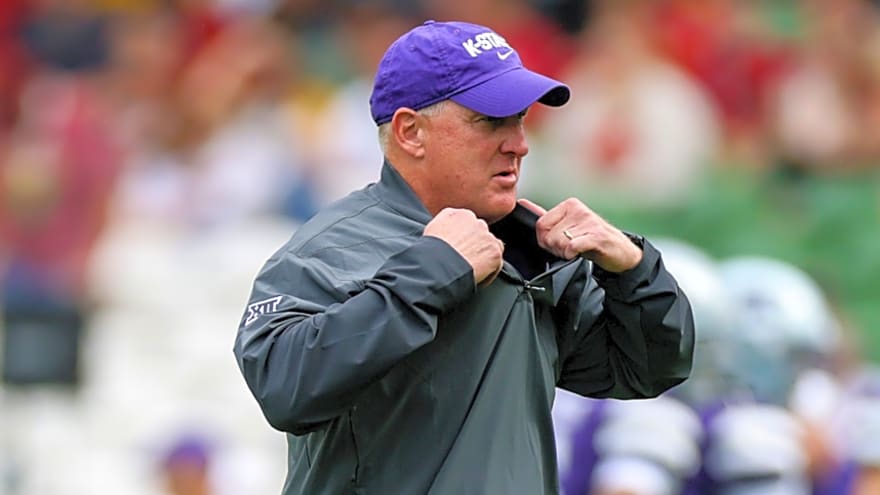
CFB Week 0 winners, losers: Fourth-down decisions loom large in ranked Big 12 showdown

Buccaneers' Shilo Sanders may have jeopardized chance to make 53-man roster
Saturday was not a good day for Shedeur Sanders and Shilo Sanders, two players competing for a spot on the 53-man roster of their respective teams, the Cleveland Browns and Tampa Bay Buccaneers. Hours after Shedeur took more sacks (five) than completions (three) and had a heated moment with Browns head coach Kevin Stefanski, Shilo was ejected from the Buccaneers' preseason game against the Buffalo Bills. "Bucs S Shilo Sanders has been ejected from tonight's game following an unnecessary roughness penalty," Scott Smith of the Buccaneers posted on X. Shilo appeared to take exception to Zach Davidson hitting and blocking him after a play had ended before the rookie took a swing at the Bills' tight end. The ejection came at a bad time for Shilo, who was competing with Kaevon Merriweather and Rashad Wisdom for the No. 4 safety spot on the depth chart. Before the game, Buccaneers head coach Todd Bowles said that Shilo's output against the Bills would be big in his evaluation before the team has to trim the roster to 53 players by Tuesday. "Shilo's very aggressive, very young, very hungry," Bowles said. "He can make plays in the box and we know he can run down and give us 100% on special teams, so this last week is going to be very important for those guys to show up." Following the ejection, Shilo lost critical playing time to show his strengths on the field. He also showed the coaching staff a short temper and cost Tampa Bay with an unnecessary penalty. Shilo will end his preseason with four total tackles. He has shown he has the talent to be in the league, but Shilo's role will likely be as a practice squad player until his play and mental strength develop.
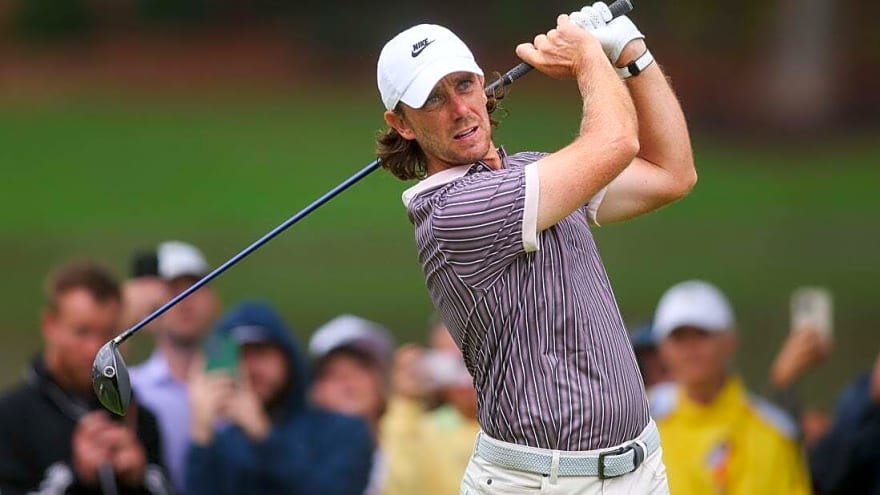
Tommy Fleetwood, Patrick Cantlay providing drama atop Tour Championship leaderboard
ATLANTA -- Tommy Fleetwood is still in position to win his first PGA Tour tournament — one of the biggest — but he's sure making it interesting. Fleetwood lost his lead at the Tour Championship after hitting it in the water on the par-3 15th hole in the third round of the FedEx Cup playoff finale at East Lake Golf Club on Saturday. He ended up making double bogey to fall to 14-under par. At the same time, Patrick Cantlay made the second of two straight birdies on the 17th hole to move to 15-under and take the lead that Fleetwood had enjoyed all day, at times by as many as three strokes. At the end of the day, Fleetwood overcame the mishap and he and Cantlay stand tied for the lead at 16-under going into Sunday's final round. Fleetwood (67) bounced back from the water ball with a birdie on the 16th hole to move back into a tie with Cantlay at 15-under. Cantlay (64) answered back with birdie on the 18th to move to 16-under. Fleetwood then birdied the 17th and parred the 18th. Cantlay, the 2021 FedEx Cup champion, birdied the final three holes and four of the last five. Russell Henley (69), who shared the second-round lead with Fleetwood, is third at 14-under. Keegan Bradley (63) is fourth at 13-under. Scottie Scheffler is still lurking. The world's No. 1 golfer and leader in the FedEx Cup point standings started the third round five shots back of Fleetwood and Henley. He trended in the wrong direction with bogeys on the first two holes. However, birdies in five of the next eight holes righted his round. He stands in fifth at 12-under (66). Bradley added suspense with big drama inside the tournament. The U.S. Ryder Cup captain stands at 13-under to move into serious contention. His round included an eagle from the fairway on the par-5 sixth hole and ended with three straight birdies. Bradley has six captain's picks to make for the Ryder Cup team on Wednesday. The question is whether he should choose himself, becoming the first playing captain since Arnold Palmer in 1963. That year's international competition was also played at East Lake. "I was so tired Monday, Tuesday, Wednesday," said Bradley, who admitted to being preoccupied with Ryder Cup decisions and strategy this week. "I was really just truthfully trying to get through this week. This is a bit surprising, but just I really played spectacularly today. I'm really proud of this round." Fleetwood is close enough to taste his first PGA Tour victory -- again. His near misses have been well documented. He entered the Tour Championship fifth in the points standings, the highest-ranked player in the 30-player field without a win. In the past two weeks, he has finished tied for fourth and tied for third in the playoff events, the St. Jude Championship and the BMW Championship. Fleetwood also has seven top-10 finishes this year and a total of 30 top-fives without a victory. Rain fell throughout the day, necessitating the preferred lie rule for the third straight day, but play was never in jeopardy of being halted. Scoring was up significantly in the third round after two days of record scoring. In the first two rounds, a tournament record was set with 13 rounds of 64 or better, reached after just 36 holes. Only Bradley and Cantlay went that low on Saturday. In the first two rounds, only five players shot over par. On Sunday, nine players did so. --Chris Vivlamore, Field Level Media



